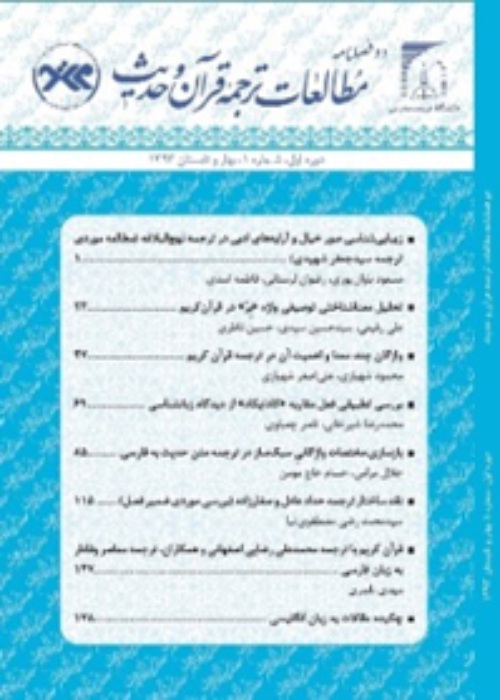The Linguistic Approach to Translation of the Qur'anic Word "Khuṭuwāt" Based upon Etymology
The most important duty of scholars in the process of translating the Holy Qur'an is to understand the meaning of the Qur'anic words accurately and to choose the best equivalents for them, especially when the Qur'anic word has some special semantic components which have been neglected in the period of Classical Arabic. For example, the word "khuṭwah" is used in the Holy Qur'an only in the form of "khuṭuwāt al-shayṭān" (the footprints of Satan) due to having some unknown semantic components. Adopting the etymological approach, the present research is an attempt to (A) find the root "Kh-Ṭ-W" in various Semitic languages, (B) find out its oldest meaning, (C) study the semantic changes of this word towards the Qur'anic Arabic, and finally (D) reexamine its semantic components in the Holy Qur'an. Moreover, this study evaluates the success of Persian translators in providing equivalents for the Qur'anic word "khuṭwah". This study shows that one of the most significant semantic components of the word "khuṭwah", which has been neglected in the lexical and interpretive studies, is going astray and becoming lost. Therefore, "khuṭwah" at the time of the revelation of the Holy Qur'an referred to the footprints that cause the travelers to go astray.
-
The Issue of Gender (In)equality in Modern Intellectual Discourse; The Comparative Study of Updated Readings of Q 2:228
Mohammadhassan Shirzad *
Journal of Comparative Interpretation Studies, -
An Anthropological Analysis of the Ḍayzan Marriage in the Holy Qur’an Revelation Context
Ahmad Pakatchi, Mohammad Hasan Shirzad *,
Mishkat, -
Re-examination of the Semantic Components of "Ishfāq" in the Holy Qur'an with Especial Emphasis on Historical Semantics
Mahmoud Karimi *, Muhammad Hassan Shirzad, Muhammad Hussein Shirzad
Journal Linguistic Research in the Holy Quran, Autumn-Winter 2020




